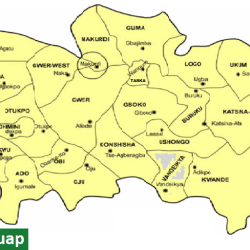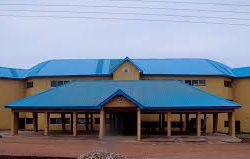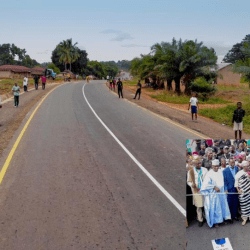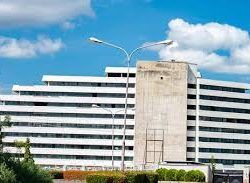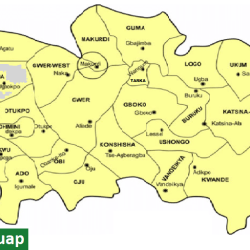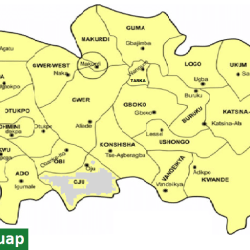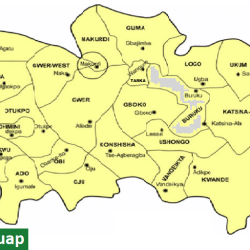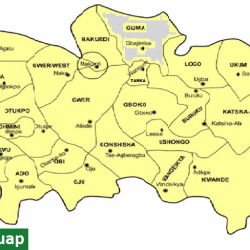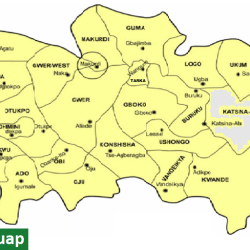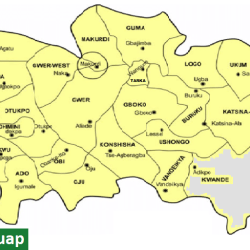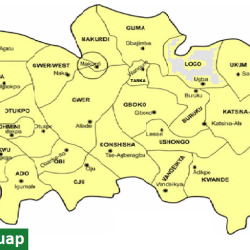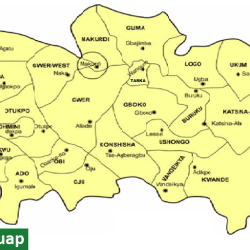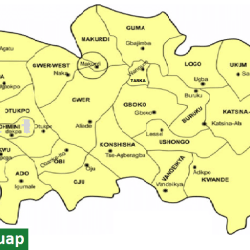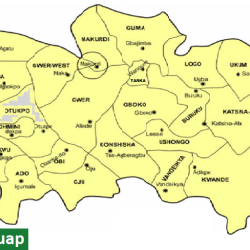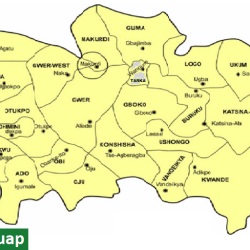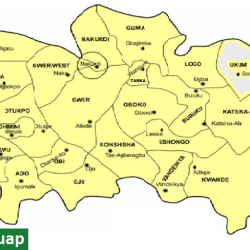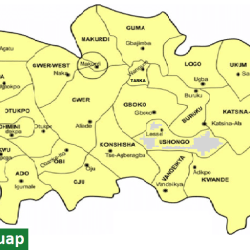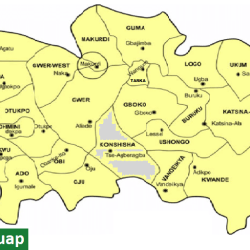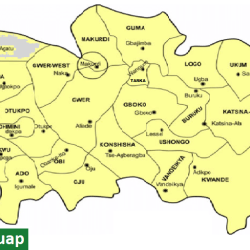Vandeikya Local Government Area, situated in the southeastern part of Benue State, Nigeria, was established on August 28, 1976, following the nationwide Local Government Reforms. It originated as a division from the Gboko Local Government Council. The area is predominantly inhabited by descendants of Achira (also known as Jechira or Ikyor), and the name “Vandeikya” reflects the traditional gathering site on a rock near the Aya River, where the people would meet, a site historically associated with baboons or monkeys.
Key Details of Vandeikya LGA
- Location & Boundaries:
- Southeast of Benue State
- Borders Cross River State’s Obudu and Ogaja Local Government Areas
- Shares boundaries within Benue State with Konshisha, Kwande, and Ushongo LGAs
- Geography:
- Landmass: Approximately 183,939 square meters
- Rivers: The Aya and Be rivers
- Population: Estimated at over 532,881 as of the 1999 census projection
Administrative Structure
- Council Wards: Vandeikya LGA is divided into 12 council wards, which are:
- Mbagbam, Mbadede, Mbagbera, Mbajor, Mbayongo, Mbakaange, Nyimangbah, Ningev, Mbatyough, Tsambe, Mbakyaha, and Vandeikya Township
- Electoral Structure: The area has 230 polling units across these wards, falling under the Kyan and Tiev state constituencies.
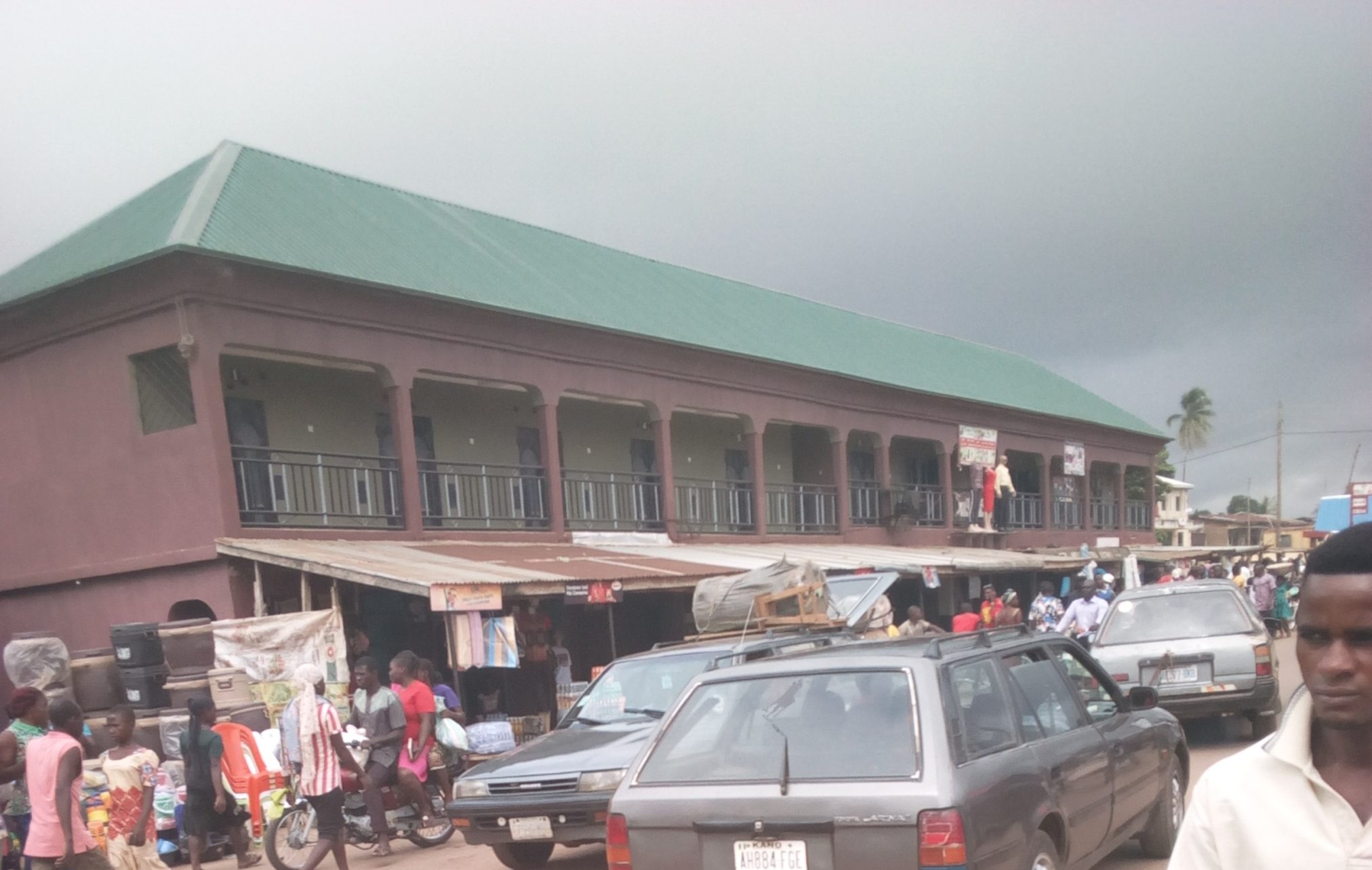
Economy and Industrial Potential
Agriculture
Vandeikya is an agriculturally rich area, known for cultivating:
- Crops: Rice, sweet potatoes, sorghum, cassava, tomatoes, and various spices
- Fruits: Citrus and bananas
- Other Products: Palm oil and palm products
The LGA also has ample Fadama lands (floodplain areas) suited for cattle and sheep grazing. There’s an established Federal sheep grazing area in Ningev Council Ward, highlighting its potential for livestock farming.
Industrial Prospects
Vandeikya is poised for agro-based and mineral industries, with potential for:
- Starch and glucose production
- Fruit juice extraction and vegetable oil processing
- Bottling of palm wine
- Mining of solid minerals such as zinc, barite, kaolin, and rutile
Climate
Vandeikya experiences a short dry season from November to March and a long wet season from April to October. This climate ensures consistent water and soil conditions for agriculture and other industries.
Infrastructure and Public Facilities
- Transport: The Trunk ‘A’ highway facilitates access to Cross River State and northern states such as Taraba and Adamawa.
- Electricity: Supplied via the national grid to Vandeikya Township, Chi village, and Tsar through local communal initiatives.
- Healthcare: A modern general hospital, a missionary hospital, and numerous clinics are distributed throughout the area.
- Water Supply: The state’s water program provides Vandeikya LGA with pipe-borne water.
Historical Background
Vandeikya LGA was originally part of the Gboko LGC and was established as an independent entity through the 1976 Local Government Reforms. The name “Vandeikya” stems from a traditional rock settlement where descendants of a common ancestor, Jechira (also known as Ikyor), met to discuss communal matters. This rock settlement, often associated with the gathering of baboons, reflects a strong cultural heritage symbolized in the Vandeikya LGA logo.
Geographical Features
With a landmass of approximately 183,939.68 square meters, Vandeikya LGA is strategically positioned, sharing boundaries with both Benue and Cross River State LGAs. Its southeastern location within Benue State offers a unique blend of lowland and highland areas, making it suitable for various agricultural and industrial activities. Neighboring LGAs include Obudu and Ogaja in Cross River State and Konshisha, Kwande, and Ushongo within Benue State.
Demographics
The population of Vandeikya LGA was projected to be over 532,881 based on the 1999 census. Primarily occupied by descendants of the Jechira, the LGA is predominantly a Tiv-speaking community. The people here have preserved many aspects of their traditional culture, which is seen in their social gatherings, traditional attire, and local governance structures.
Administrative Structure
Vandeikya LGA is divided into 12 council wards, including Mbagbam, Mbadede, Mbagbera, Mbajor, Mbayongo, Mbakaange, Nyimangbah, Ningev, Mbatyough, Tsambe, Mbakyaha, and Vandeikya township council ward. Each ward has its administrative roles and representatives, contributing to the political and social management of the LGA. Additionally, Vandeikya has two state constituencies, Kyan and Tiev, which represent the local government at the state level.
Agricultural Profile
Agriculture serves as the economic backbone of Vandeikya LGA. The region is well-known for producing rice, cassava, sweet potatoes, citrus, bananas, spices, tomatoes, and various peppers. The area’s vast Fadama region supports livestock farming, including cattle and sheep. Notably, the Federal Government has established a sheep grazing area in Ningev Ward, reinforcing the LGA’s reputation as an agricultural hub.
Economic and Industrial Potential
In addition to agriculture, Vandeikya LGA has substantial industrial prospects. Key industries include starch and glucose production, fruit juice extraction, vegetable oil processing, and bottling of palm wine. The area is also rich in solid minerals like zinc, barite, kaolin, and rutile, which present opportunities for mining. These resources could support the development of local industries and attract investment in processing and manufacturing.
Climate and Weather Patterns
The local climate is characterized by a short dry season (November to March) and a long wet season (April to October). This climate supports the cultivation of diverse crops throughout the year, with high rainfall in the wet season ensuring bountiful harvests. For investors, the abundance of natural resources coupled with favorable weather conditions makes Vandeikya LGA an ideal location for agribusiness.
Infrastructural Development
Vandeikya LGA is well-connected through several major roadways, including the Trunk ‘A’ Federal Highway, which links Cross River State to Katsina-Ala and the northern regions of Nigeria. These routes facilitate trade and movement between neighboring states, enhancing Vandeikya’s role as a commercial and transit hub within the region.
Utilities and Public Services
Electricity in Vandeikya township is supplied through the national grid, largely driven by local community efforts. The area also boasts healthcare facilities such as a modern general hospital, missionary hospital, and several local clinics. State-sponsored water supply initiatives provide pipe-borne water, making clean water accessible to residents.
Natural Resources
Vandeikya LGA is home to two major rivers, Aya and Be. These water sources are not only critical for irrigation and agriculture but also provide recreational and potential tourism opportunities, adding to the LGA’s natural beauty.
Commerce and Markets
The LGA has a vibrant marketplace system, with primary markets like Ihugh and Agbo driving significant economic activity. Secondary markets such as Tsar, Koti-Yough, and Gbem supplement the revenue generated by the primary markets. Smaller local markets including Dagba, Betse, and Agidi Mbakena play essential roles in supporting the local economy and contributing to the internal revenue.
